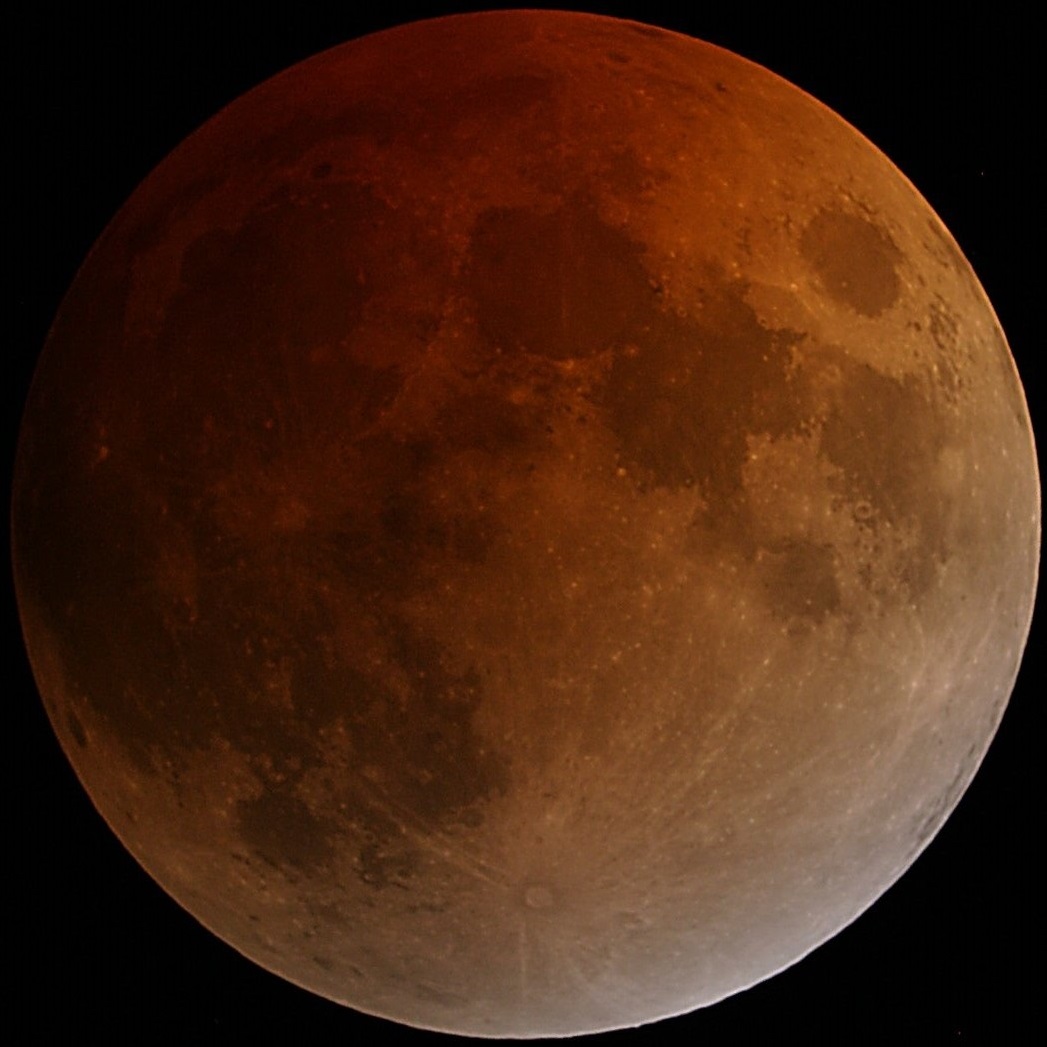Why it’s worth losing sleep over the partial lunar eclipse on Nov. 19, 2021
November 12, 2021
By Amy Sayle
The heavens are aligning. During (very) early Friday morning Eastern time, on November 19, 2021, the full moon passes through Earth’s shadow, and North Carolina gets a lunar eclipse. And you can see it!
In fact, everyone who’s on the nighttime side of Earth during the eclipse can see it. But get ready for the bad news, North Carolinians. For us, the action happens at times you may find a bit painful:
- 2:18 a.m. – Partial eclipse begins
- 4:03 a.m. – Maximum eclipse (technically still partial but very near total)
- 5:47 a.m. – Partial eclipse ends
All times are Eastern Standard Time, on Friday, Nov. 19, 2021.
Why might you want to sacrifice sleep to view this?
1. Feel like part of the solar system. As you witness Earth’s shadow appearing to take a progressively larger and larger bite out of the Moon, you’ll get a real sense of how you live in a solar system with massive moving objects.

2. It looks really cool. Because Earth’s atmosphere filters and refracts sunlight onto the Moon, the full Moon will still be visible when it’s in Earth’s shadow. Expect the Moon to turn some variation on red, with its exact appearance depending on the dust and clouds in Earth’s atmosphere. During the January 2019 lunar eclipse, at totality it looked like an eerie dark red hole had opened in the sky. This 2021 eclipse isn’t total, but it gets awfully close, at 97%.
3. It’s easy to see. Your eyes are all you need. You don’t need special equipment. You don’t need a special location. You don’t even need dark skies. Just walk outside and find the Moon. For North Carolina viewers, the Moon will be high in the western sky when the eclipse starts at 2:18 a.m. and still reasonably well placed in the west by maximum eclipse at 4:03 a.m. If you wait until closer to the end, 5:47 a.m., you’re living a little more dangerously, especially if you’ve got obstacles blocking your view to the west, because the Moon will set not long after. Note that the main eclipse action is preceded and followed by a penumbral eclipse, when the Moon passes through Earth’s fainter, outer shadow—but the penumbral phases are more difficult, and less impressive, to observe.
4. It lasts for hours. It takes a while for the Moon to pass through Earth’s shadow. Pick the best (well, least inconvenient) time during the eclipse, and pop outside. Or stay out for hours and watch its progress. See an animation here for what it’ll look like from Chapel Hill, North Carolina.
5. See evidence that you live on a round planet. Earth’s shadow on the Moon will be curved.
6. Connect with nature. Sure, you could just look at the pretty photos that’ll be online afterward, rather than waking up early. I suppose you could also just look at photos of the Grand Canyon rather than looking at it in person. But nothing beats the experience of the real thing. And stepping outside your own home to look at the Moon is way easier than traveling to Arizona.
7. Make a memory for a lifetime. Have your days been running together since mid-March 2020? Waking up to see a lunar eclipse will create a sharp new memory.
Now that you’re persuaded (I hope) that it’s worth losing sleep over this eclipse, here’s how to prepare:
- Check your weather. If it’s overcast, all you’ll see are clouds.
- Set an alarm on Thursday evening, November 18, 2021. If you can go outside only once, I
recommend choosing either around 2:30 a.m. EST on Friday, November 19, soon
after the partial eclipse starts, or shortly after 4 a.m. EST, when the eclipse
is at its maximum.
- Dress warmly.
Let’s hope it’s not as cold as it was during the lunar eclipse on January
20/21, 2019, when 800 of you hardy people joined us at the Morehead Planetarium
sundial with temperatures in the teens. (We’re not asking our skywatching staff
to report to work from 2-4 a.m. on a weekday, so you’re on your own for this
2021 eclipse.)
Don’t live in North Carolina? You can see the eclipse, too, as long as your weather cooperates and you’re on the nighttime side of Earth during the eclipse hours. Check by converting the list of times at the beginning of this post to your time zone. Or see the PDF of NASA’s eclipse map.
If you miss this eclipse, you have another shot at one, with better timing for North Carolina. Mark your calendar for the night of May 15/16, 2022. That’s a Sunday evening into early Monday morning. We plan to host a public skywatching event for that eclipse. Stay tuned for details on timing and location!
